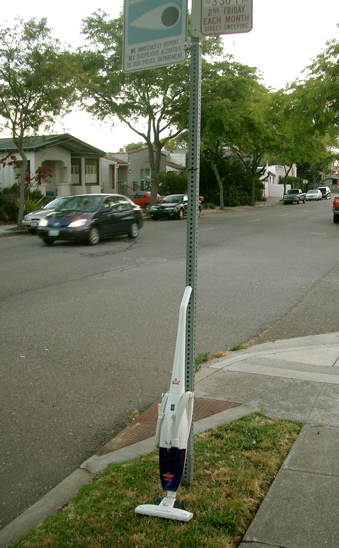I’ve got 21.4 miles on my little cycle computer from a ride I did last night. Drove up to Davis to see if I could catch my friend Bruce returning from his 750-mile trek up to the Oregon borderlands and back. I started out from Davis toward a little town called Knight’s Landing about a quarter to 11, a little spooked about riding by myself on a Friday night. But I was fine as soon as I really got rolling, absorbed in taking in the warmth of the night — out in the Valley so much like I remember from Illinois — the moon rise, and watching the little circle of pavement my bike light illuminated. I had no idea how far I’d go before I met Bruce. He’d left the rest stop at Oroville, 88 miles up the road, a little before 6 p.m. Ordinarily, someone of his abilities would make that trip — mostly flat with no wind to speak of — in about a little less than five hours. But with the 670 miles in your legs, and with the heat of the last few days to take the starch out of you, I was figuring the trip would take seven hours, even eight.
A few miles out I encountered a single rider. I didn’t think it was Bruce — the lights were different — but I thought I’d see how the guy was He turned out to be Larry from upstate New York, and he started asking me about the turns he’d have to take on the way to the finish. I wound up riding all the way back in with him to show him.
I rode out again. Saw several riders pass in twos threes and fours. None looked to be Bruce, and I just cheered them on and kept riding. About the same place I encountered the first solo rider I met another. I asked if he needed any help. He said no, he knew just where he was and he’d be fine. About 30 seconds later he said, “I wish I knew where I was.” So I rode up to the next turn with him, too, before turning around once more.
Heading north again, I saw the lights of Woodland ahead; and also those of a couple bikes. They passed, I did my U-turn, and caught up. “I heard that there was really some really hard-core bike ride going on out here,” I said to the trailing rider. He confirmed that and added that he had the sore ass to prove it. Then the leading rider said, “Hey, is that Dan?” It turned out to be Bruce, really tired and really glad to hear that when I said I’d been riding for an hour and a half it did not mean we were an hour and a half from the finish. In fact, we were at the final control in about 10 minutes. Easy ride for me. Awesome one for him and everyone else who did it.

